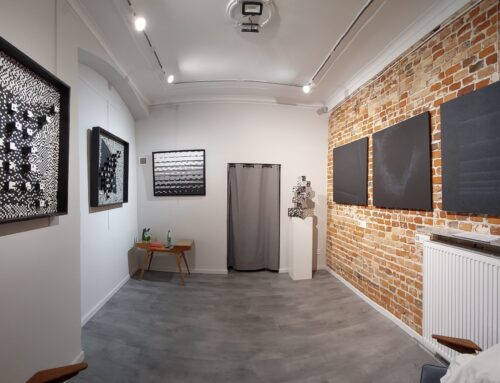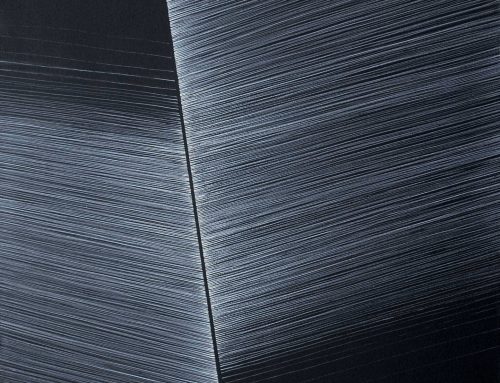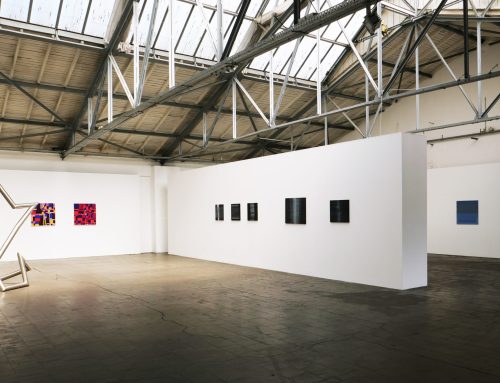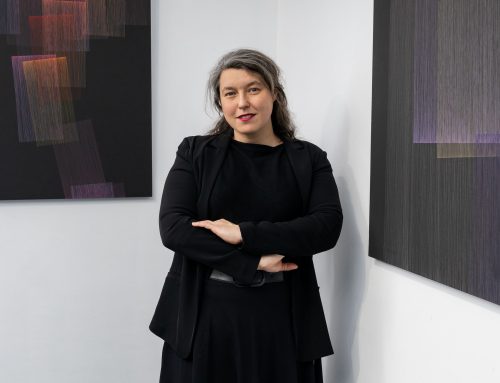Artist of the Week: Anna Szprynger
online exhibition
https://pragaleria.pl
Pragaleria
Stalowa 3, 03-425 Warsaw

TAKE COURAGE!
You don’t need a key to open the door of art. Anna Szprynger’s canvases fit perfectly into this idea. Each of us can understand, feel or interpret the artist’s paintings in their own individual way. The only necessary condition is our sensitivity and a bit of concentration when looking at the canvas tightly filled with a thicket of lines and dashes. In the case of Anna Szprynger’s paintings, the door for the recipient of her paintings is open, all you need to do is have a little courage to say aloud what was born in your mind. The artist’s work encourages boldness and individual opinions.Schematic interpretation, a typical thought pattern or the sociohistorical context may disturb the aesthetic experience when we are left “alone” with the image. Whether we like it or not, they direct our thoughts along well-known, specific lines of association. They place the work in the context, the literature on the subject or the opinions of others – those who can be considered an authority. It is different in the case of abstract art, especially the one that uses the language of geometry. It is worth facing this type of painting while keeping a “clear mind”, not marked by the mechanisms of cognition, interpretation or the opinion of other people. Thanks to Anna Szprynger’s canvases, we have such an opportunity. A chance to experience an unrestricted individual aesthetic experience is a unique gift that abstraction allows.The thin, precise lines and dashes that fill the canvas, building subsequent diagonal, horizontal spaces, is a tool used by Anna Szprynger in her paintings. The artist consciously reduced the formal language of her works in order to intensify the aesthetic experience we can feel when encountering her works, without imposing any interpretation. The consistent lack of titles also helps. All means used by Anna Szprynger lead to mutual – shared by the artist and the recipient – contemplation or meditation. Anna Szprynger’s painting is not based on the foundations of mathematics, physics, number theory, probability or games of chance. It’s a few, several dozen, several hundred, several thousand lines – thoughts, threads, signs. In an inspiring, open, and therefore extremely relevant and personal text by Marek Bieńczyk, you can find a fragment: “Her hand is able to think, that’s how I like to imagine it. Or even more so, I like to imagine, or perhaps actually see, that all of these fine lines (the wires, trails, streaks, threads, rods, bundles) are the thoughts of this hand.”* Even just this one sentence perfectly describes the method-ology of Anna Szprynger’s work and her openness to individual aesthetic interpretations, free from conceptual and meaning accretions. An experience subject to one condition – reflecting on your own emotion. There are many aesthetic theories that make you dizzy with their discrepancy. However, it is worth being aware that the dispute over the methodology and the arbitrary determination of the meaning of concepts in art (such as, for example, beauty, form, aesthetic experience) has been going on for centuries and will be continued over the following centuries. This is due to the fact that, despite the efforts of philosophers, aesthetics and art historians, judgments will never be absolutely objective, because the tendency to label opinions with individuality is a natural human trait. The paintings of Anna Szprynger encourage the viewer to this natural and personal subjectivity that belongs to each of us. Aesthetics and humanists provide tools for this, for example those, that can be found in the works of Władysław Tatarkiewicz **. In order to avoid a certain kind of bias, and, most importantly, burdening the narrative on Anna Szprynger’s paintings, we have deliberately avoided certain concepts in this text. One of them is “form”, often associated with a two- or three-dimensional physical shape. But there is also a lesser-known definition – it is the Kantian understanding of form as an image appearing in the mind, that gives us an incredible freedom to perceive a work of art. This text intentionally does not contain adjectives describing emotions, as Anna Szprynger’s painting is sublime***, what, following Tatarkiewicz’s thought, should move our individual emotions. We deliberately avoided interpreting, looking for references, comparisons to trends in art or oth-er artists, and finally gave up describing our own feelings in order to allow the reader to fully experience an individual aesthetic experience and to and let him build his own, unhindered interpretations. It is worth opening your mind and finding yourself in the paintings of Anna Szprynger in your own way. Let us get carried away by emotions, not theory, general meaning or what is right and what is wrong. Take courage!
* Marek Bieńczyk “Anna ’s Lines”, in: Untitled. Anna Szprynger, Warsaw, 2014, p. 47.
** Władysław Tatarkiewicz, The History of Six Concepts, Warsaw 2006; Władysław Tatarkiewicz (1986-1980) – philosopher, historian of philosophy, aesthetics and ethics, art historian, author of studies on literary sources for research on artistic doctrine from antiquity to modern times.
*** see Władysław Tatarkiewicz, The History of Six Concepts, Warsaw 2006, p. 202.
Pragaleria Team






